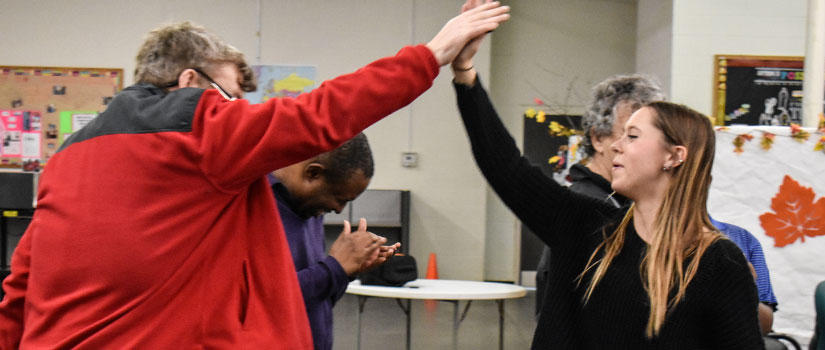Will I still get to perform if I major in Dance Education?
Yes, of course! Performance is a part of any degree in dance and directly informs one’s teaching. Dance Education majors have performed in original works created by the dance program faculty as well as restaged works by eminent choreographers such as George Balanchine, Paul Taylor, Clay Taliaferro and David Parsons.
What type of practical experience will I gain as a Dance Education major?
Students who major in dance education at the University of SC have many opportunities throughout their course of study to learn about teaching dance within - and beyond - the classroom through hands-on experiences in real-world settings. Integrative learning, the connection of within-the-classroom and beyond-the-classroom learning in meaningful ways, is infused into every dance education course. Therefore, students are exposed to the field where they learn by doing from the outset of their studies.
Below is a sample of courses that include beyond-the-classroom experiences in which students participate. In addition, each course includes a practicum placement with a certified dance teacher in a local public school.
Students participate in state and national arts advocacy days where they meet with politicians to discuss critical funding and policy issues related to the arts.
Number of Field Hours: 10
Students have opportunities to design and teach creative dance lessons to pre-K students at the Bright Horizons Child Care Center on campus.
Number of Field Hours: 15
Students mentor local middle and high school students in choreography projects. This interaction occurs online and allows students gain hands-on experience using the latest technology. Students engage in distance learning mentoring through The Video Collaboratory, an innovative video platform that facilitates such interactions.
Number of Field Hours: 25
Students teach dance at the Babcock Center to gain practical skills in teaching dance to populations of various abilities.
Number of Field Hours: 50
Sample Program of Study
By taking DANC 150, 281 and 282, students will develop an understanding of dance as a profession as well as the history and role of dance in a variety of cultural contexts.
In DANC 103, 160, 300, 360, students will study basic anatomy and kinesiology as it applies to dance technique and performance. Students will also explore the various stages of the creative process and principles of music composition as a tool that can enhance the relationship between dance and music in a variety of genres.
Through a series of technique courses, students will develop technical and artistic proficiency in a broad range of technical styles present in K-12 education including: ballet, contemporary, West African, musical theatre, and folk dance.
In DANC 177, students rehearse for dance performances that consist of original choreography created by faculty and guest artists, students, or touring dance ensembles.
The professional education sequence (DANC 270, 370, 470, 471, 478, 479) covers methods for dance instruction in K-12 education, curricular design, and assessment. Students will participate in arts advocacy at the state and national level, develop hand-on experience in a number of educational environments, and learn how to work with diverse populations.
Students are also required to complete the education cognate. In this series of courses (EDFI 300, EDPY 401, PEDU 515, EDEX 523, EDRD 500), students will learn about the social, political and historical aspects of education; theories of human development and cognition, and literacy in the arts.
